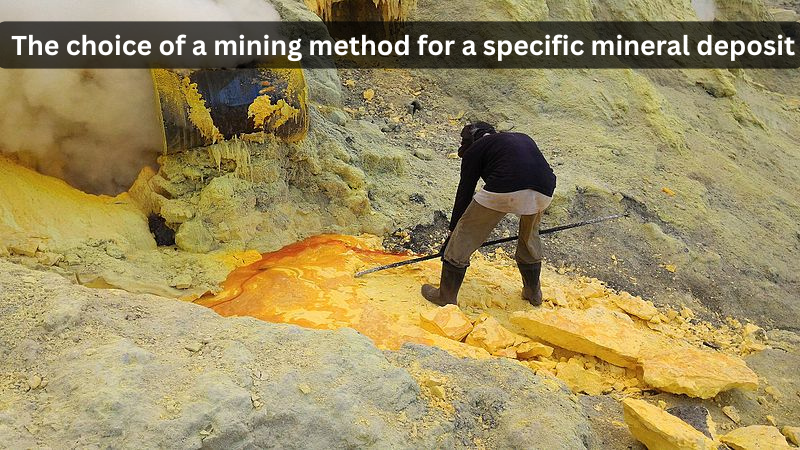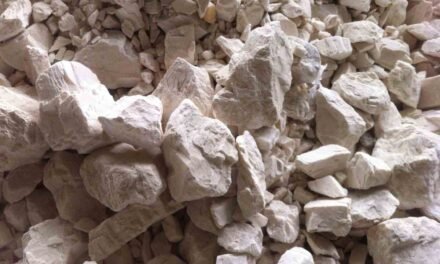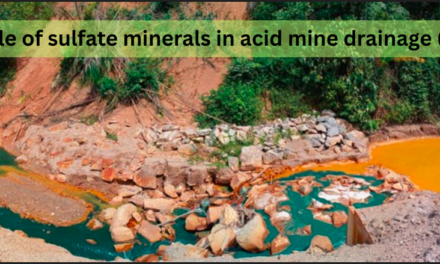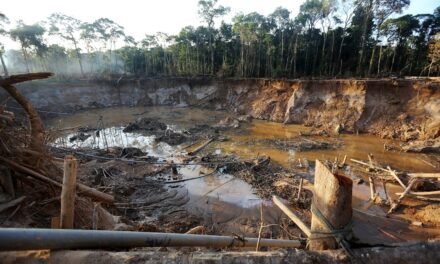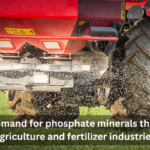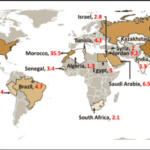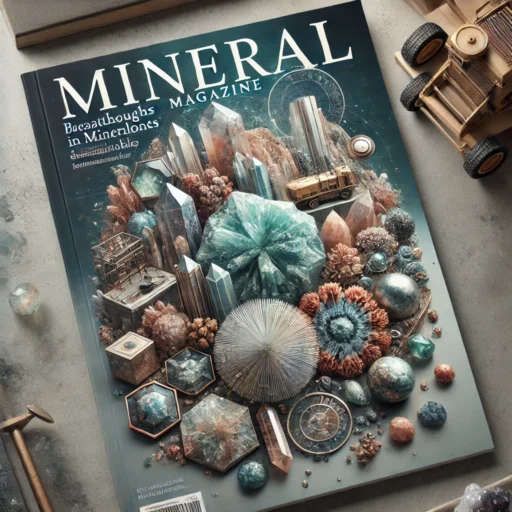The choice of mining method for a specific mineral deposit depends on several factors that are both technical and economic. These factors are crucial in determining which method—surface mining or underground mining—will be most efficient, safe, and cost-effective. Here’s a breakdown of the key factors that influence this decision:
1. Depth of the Ore Body
- Shallow Ore Bodies: When the mineral deposit is located close to the surface, surface mining methods (like open-pit mining or strip mining) are often the most economical choice. Shallow deposits are typically easier and cheaper to extract using surface methods.
- Deep Ore Bodies: For deposits located deep underground, underground mining becomes necessary. This is typically the case when the ore body extends far below the surface, beyond the reach of surface mining methods.
2. Ore Body Shape and Size
- Horizontal or Flat Ore Bodies: For large, shallow, horizontally or gently dipping ore bodies, surface mining methods (such as strip mining or open-pit mining) are usually preferred. These methods can remove large volumes of material in a cost-effective way.
- Vertical or Steeply Dipping Ore Bodies: If the ore body is narrow, steeply dipping, or isolated, underground mining methods (such as shaft or drift mining) may be more suitable. Underground methods allow for more selective and precise extraction.
- Irregular Ore Bodies: Irregular or fragmented ore bodies that are not uniform in shape may require underground mining to prevent the loss of ore and to control the extraction process more carefully.
3. Ore Grade and Mineralization
- High-Grade Ore: High-grade deposits (containing a high concentration of the target mineral) often justify the higher costs of underground mining, as the ore’s value makes it economically feasible. Underground methods allow for selective mining, which minimizes waste.
- Low-Grade Ore: For low-grade deposits, surface mining is typically more cost-effective. Surface mining allows for the extraction of large volumes of material, even if the ore itself is less rich in the target mineral, which helps spread the cost over a larger amount of material.
4. Environmental and Safety Considerations
- Environmental Impact: Surface mining can cause significant environmental disruption, including habitat destruction, soil erosion, water contamination, and large visible scars on the landscape. In regions with strict environmental regulations or public opposition, underground mining may be chosen for its smaller surface footprint and reduced environmental impact.
- Safety Concerns: Surface mining generally presents fewer safety risks to workers compared to underground mining, where hazards such as cave-ins, toxic gas buildup, and flooding are more prevalent. In some cases, the safety of workers may influence the decision to choose a method with fewer underground risks.
5. Geology of the Deposit
- Rock Strength and Stability: If the rock surrounding the ore body is weak or unstable, underground mining might be impractical due to the high risk of tunnel collapses. In such cases, surface mining might be the safer option. On the other hand, if the surrounding rock is stable, underground mining may be viable.
- Geological Structure: The geological structure, such as fault lines, folds, and fractures, can significantly affect the choice of mining method. Faults or fractures in the rock may make certain underground methods too risky or uneconomical, whereas surface mining may allow for easier access to the ore.
- Water Table: The depth of the water table also plays a role. If the ore body lies below a high water table, underground mining will require extensive dewatering systems, which can increase costs. In such cases, surface mining may be considered more practical.
6. Infrastructure and Location
- Proximity to Transportation: Surface mining requires substantial infrastructure such as roads, railways, or ports to transport the mined material. If the deposit is located in a remote area with limited infrastructure, the costs of surface mining could be higher.
- Accessibility: If the mineral deposit is located in an area that is difficult to access or has challenging topography (e.g., mountains, dense forests), underground mining might be preferred, as it causes less disruption to the surrounding environment and can be easier to implement in certain regions.
- Energy and Water Supply: Underground mining requires a steady supply of electricity and water for ventilation, dewatering, and safety systems. The availability of these resources can influence the choice of method.
7. Economic Factors
- Capital and Operating Costs: Underground mining is generally more capital-intensive and has higher operating costs due to the need for tunnels, ventilation, and specialized equipment. The costs for building shafts or declines, and maintaining underground tunnels, can be substantial. On the other hand, surface mining typically has lower upfront costs but may lead to higher long-term environmental reclamation costs.
- Market Prices of the Ore: The economic viability of a mining method often depends on the market price of the ore. If the price of the mineral is high, mining companies might be more willing to invest in the higher-cost underground mining methods. Conversely, if prices are lower, surface mining might be favored to lower costs.
- Ore Recovery Rates: Surface mining can recover a larger percentage of the ore in the early stages of mining, but it may leave waste behind or require more extensive reclamation. Underground mining can have higher recovery rates due to more selective extraction, but the higher operating costs can offset this advantage.
8. Social and Regulatory Considerations
- Community Impact: Surface mining, especially large-scale operations, can displace communities, damage ecosystems, and disrupt local agriculture. In areas where these impacts would be unacceptable, underground mining might be chosen for its reduced environmental footprint.
- Government Regulations: Local, regional, and national regulations, including land-use policies, environmental protection laws, and health and safety standards, can significantly affect the choice of mining method. In some cases, regulations may require the adoption of underground mining to mitigate the environmental or social impacts of surface mining.
- Public Opinion and Stakeholder Involvement: Mining companies must also consider local communities, environmental organizations, and other stakeholders when deciding on a mining method. In some cases, public opposition to surface mining (e.g., mountaintop removal or large open-pit mines) can lead to the adoption of underground mining methods to reduce visible environmental impacts.
9. Technological Advancements
- Mining Technologies: Advances in mining technology, such as automation, drone surveys, and robotics, can influence the choice of mining method. If surface mining becomes more efficient through technological innovations (e.g., better ore sorting and waste disposal methods), companies might opt for surface mining even if underground mining was previously preferred. Similarly, improvements in underground drilling and excavation technologies can make underground mining more viable and cost-effective.
- Mining Equipment Availability: The availability of specialized mining equipment—such as large-scale excavators and haul trucks for surface mining or tunneling machines for underground mining—can influence the decision. If certain equipment is more readily available, it may be more cost-effective to choose that method.
10. Deposit Type
- Placer Deposits: For deposits like gold, diamonds, or other heavy minerals found in riverbeds or beach sands, placer mining is often used. These are typically surface deposits, and mining methods like panning, sluicing, and dredging are employed.
- Lode Deposits: For hard rock deposits such as copper, gold, silver, or iron ore, the choice of method will depend on the depth and shape of the ore body, along with other factors like grade and surrounding geology.
Conclusion
The choice between surface and underground mining depends on a combination of geological, economic, environmental, and social factors. In some cases, mining companies may even use a combination of methods—such as transitioning from surface mining to underground mining as the ore body deepens. Ultimately, the method selected must balance cost-effectiveness, safety, environmental impact, and the long-term sustainability of the project.

